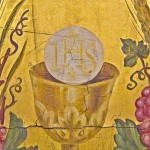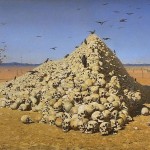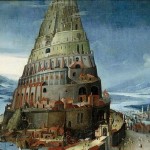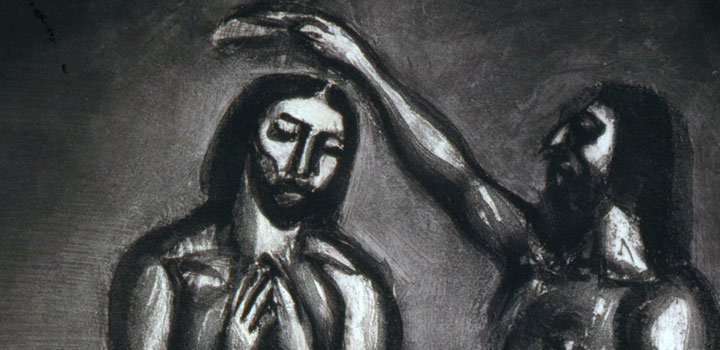
Thanks to repetition and the familiarity it breeds Palm Sunday’s second reading, as probably with any second reading (I suppose), doesn’t usually stand out as something all that special.
Here’s how it reads, or rather, the portion of it that’s most potent:
Christ Jesus, though he was in the form of God,
did not regard equality with God
something to be grasped.
Rather, he emptied himself [~kenosis],
taking the form of a slave,
coming in human likeness;
and found human in appearance,
he humbled himself,
becoming obedient to the point of death,
even death on a cross.
The web’s most reliable information toaster tells us the following about the verb kenosis in the Bible: “The New Testament does not use the actual noun kénōsis but the verb form kenóō occurs five times (Rom. 4:14, 1Cor. 1:17, 9:15, 2 Cor. 9:3, Phil. 2:7). Of these five times it is Phil 2:7, in which Jesus is said to have ’emptied himself,’ which is the starting point of Christian ideas of kenosis.”
Hans Urs von Balthasar, in Glory of the Lord: Seeing the Form goes into detail how the second person of the Trinity emptying himself out and taking on the form of the slave captured the imaginations of Catholic, Orthodox, and Lutheran theologians in the 19th and 20th centuries.
Actually, a passage I once cited from von Balthasar talking about Origen here strikingly images what kenosis is all about:
“[The Incarnation is like] a wave of the sea which, rushing up on the flat beach, runs out, even thinner and more transparent, and does not return to its source but sinks into the sand and disappears.”
From the above you might be able to surmise that kenosis, as with just about anything in theology and philosophy has two aspects: the human and the divine. From the divine perspective kenosis is the self-emptying of God into His creation. From the human perspective this involves the human emptying himself or herself in order to receive the fullness of God. Granted, the two perspectives aren’t entirely mutually exclusive.
If you have some extra time do take a look at this intentionally eclectic list of books in order to familiarize yourself with this strange notion (and suggest your own in the combox):
St. John of the Cross, Dark Night of the Soul
John of the Cross give you the blow by blow breakdown of the human psychology involved in the whole process. Yes, it hurts. It hurts and blinds so much that one of his most famous recent disciples could rightly pass for an atheist. I’m talking about Mother Theresa and the controversy surrounding her recently published diary Come Be My Light where she said:
“In my heart there is no faith—no love—no trust—there is so much pain—the pain of longing, the pain of not being wanted. I want God with all the powers of my soul—and yet there between us—there is terrible separation. I don’t pray any longer.”
She continues: “I want to speak—yet nothing comes—I find no words to express the depths of the darkness. In spite of it all—I am His little one—I love Him….”
Hans Urs von Balthasar, Mysterium Paschale: The Mystery of Easter
I probably first ran across the notion of kenosis in this book. It’s been a Lent reading mainstay since:
“One of von Balthasar’s most revealing works: the major themes of this theology are knit together in a concentrated meditation on the triduum mortis–an astonishing achievement of theological and imaginative attention.” –John Riches
Von Balthasar’s book on the Credo, his last writing project, is a nice summary of this bigger book in much more accessible language.

Sergius Bulgakov, The Lamb of God
“What is our participation in the divine humanity? In explaining this important doctrine, Sergius Bulgakov begins by surveying the field of Christology with special reference to the divine humanity. He considers the role of the Divine Sophia, examines the foundations of the Incarnation, explores the nature of Christ’s divine consciousness, and ponders Christ’s ministries while on earth. A profound discussion of Christ’s kenosis as a model for humanity rounds out this comprehensive and valuable study. The Lamb of God is one of the greatest works of Christology in the twentieth century and a crowning achievement in the examination of the theology of divine humanity.”
Simone Weil, Gravity and Grace
The following aphorism from Weil’s book is simplest way to summarize its kenotic insights:
“All sins are attempts to fill voids.”
You will violently disagree or agree with Weil, but she won’t leave you indifferent.
Stanislas Breton, The Word and the Cross.
This is one of the books chiefly responsible for bringing kenosis to the attention of French theologians and philosophers as well. A small taste of the blurb:
“In times that have challenged contemporary illusions, many seek to recover the Christian vocabulary of suffering, the cross, and a hope freed of triumphalism and exclusivity. Stanislas Breton presents the nothingness of the cross in its infirmity and paradoxical power.”
Michael J. Gorman, Inhabiting the Cruciform God: Kenosis, Justification, and Theosis in Paul’s Narrative Soteriology
“This richly synthetic reading of Paul offers a compelling argument that the heart of Paul’s soteriology lies in theosis — the incorporation of God’s people into the life and character of the God revealed in the cross. Michael Gorman deftly integrates the results of recent debates about Pauline theology into a powerful constructive account that overcomes unfruitful dichotomies and transcends recent controversies between the ‘New Perspective on Paul’ and its traditionalist critics. Gorman’s important book points the way forward for understanding the nonviolent, world-transforming character of Paul’s gospel.”
–Richard B. Hayes
Gorman is prolific in his writing and has also written an excellent book on the history of the Christian resistance to abortion.
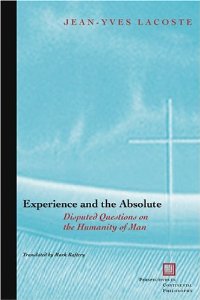
Martin Hengel, The Cross of the Son of God
Hengel was probably last century’s greatest biblical scholar you know nothing about. His books are marked by a no-nonsense style that eschews jargon (unlike what I just did there). This collection of three shorter studies gets to the heart of things, although I’m sorry to say the following publisher blurb doesn’t give you a sense for the experience of discovery you’ll get while reading these books:
“This volume conveniently collects together three related short studies by Professor Hengel, The Son of God, Crucifixion and The Atonement. Together they form an important introduction to the crucial period of Christian belief between the crucifixion of Jesus and the writings of Paul.”
Jean-Yves Lacoste, Experience and the Absolute
This book includes a chapter entitled “Toward a Kenotic Treatment of the Question of Man.” Here, instead, are Lacoste’s thoughts on the Divine and the kenotic:
“The Absolute does not make itself present in the world without this presence conforming to the ambiguous modes by which the world manifests it (the world is not the field of theophany but that of the chiaroscuro, the field of a ‘kenotic’ presence or of the sacraments).”
Wieslaw Mysliwski, Stone Upon Stone
Publisher’s Weekly gives this novel some rather high praise, “Like a more agrarian Beckett, a less gothic Faulkner, a slightly warmer Laxness, Mysliwski masterfully renders in Johnston’s gorgeous translation (Mysliwski’s first into English) life in a Polish farming village before and after WWII. . . . Richly textured and wonderfully evocative.”
But all that misses the main charm of the novel, the goofy and insightful theological reflections of the main character, a Polish peasant, such as this one:
“Or take Partyka. On his tomb he put up a Jesus carrying his cross to Golgotha. His shoulders are as wide as three Partykas, and each foot is the size of three human feet. On top of that the end of the cross reaches above the Ciepielas’ tomb next door, and Partyka and Ciepiela always get into a fight on All Souls’. When Lord Jesus is so big, you don’t get the feeling that he’s suffering even when he’s carrying his cross to Golgotha. Even if you wanted to help him, what can you do with your little strength next to his? God ought to be like a person, so you can see that whatever’s painful for people is painful for him as well. So you can be troubled when he’s troubled. And feel sorry for him the way you’d feel sorry for yourself. And understand when there’s nothing he can do, just like a person. And even switch jobs with him awhile. Give me your cross, I’ll carry it for you, and you do some of my thinking for me.”
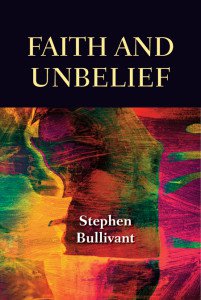
Georges Rouault, This Anguished World of Shadows: George Rouault’s Miserere et Guerre
“A dying, shipwrecked man utters his last sentence, declaring that tomorrow will be beautiful. A poor woman struggles down the road carrying a heavy load on her back. A barren suburban street is outlined in shadows. These are among the haunting impressions in Georges Rouault’s Miserere print series, originally titled Miserere et Guerre (“Have mercy,” a quotation from Psalm 51, and “War”). This portfolio was initially commissioned in 1914, but remained unpublished until 1948, by which time Rouault had witnessed the immense destruction of World Wars I and II, and with them, the complete transformation of the European landscape. This Anguished World of Shadows: Georges Rouault’s Miserere et Guerre presents all fifty-eight prints from the series, offering a close look at this artist’s poignant commentary on the hardships of war and the promise of redemption. Rendered with thick black outlines and diffused gray tonalities that evoke the smoke and darkness of a world destroyed, the Miserere prints simultaneously have the luminescence of stained glass, hinting of light breaking through darkness. While sombre, the prints also carry the message of hope for renewal and rebirth, for as Rouault knew well, behind every shadow is a source of light.”
Stephen Bullivant, Faith and Unbelief
Is this book ten or eleven? I’ve lost count. Anyway, why this book? Because Bullivant makes the important point that it’s the annoying New Atheists who best understand how shocking it is to assert that God takes on the form of the slave and then goes off and gets Hisself killed. This, plus Bullivant challenges believers to humble themselves in their exchanges with atheists by asking themselves how much secularization has much to do with many horrible examples believers have given in the last few centuries. Bracing stuff, I tell you.
If you’re looking for more books along these lines take a look at my recently published Lent reading suggestions and my post on the ruthless demands of the Gospel.


